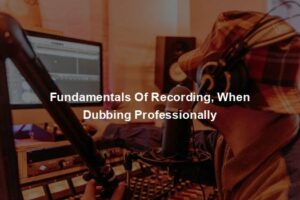
What is SDH?
These kinds of subtitles are particularly not closed captions neither are they subtitles subtitles and I write that in double to create an emphasis on why they are no subtitles. People who work in the film industry and from time to time get to work on translation, localization and subtitling jobs should have been able to hear about subtitles for the deaf and hard-of-hearing, usually by its acronym SDH.
Many people would wonder why there are specific subtitles for the deaf to an extent where they even have a name for them and would also wonder what might be so special about them. There seems to be a lot of confusion about SDH, but it’s crucial to understand this service since it’s quickly becoming a staple of video localization.
- In this article, I will explain what it means when you hear the word SDH and how it makes video audio content more accessible to people who are deaf and have difficulties in hearing and also how professionals who deal with translation and localization can tap into that service and upgrade their skills.
What Are Subtitles And Closed Captions? How Are They Related To SDH?
For starters; we will know and understand what SDH is.
SDH or what we all know as subtitles for the deaf is a recent innovation that provides film video and audio accessibility to people struggling with hearing disabilities. To further explain this, it’s important to know the difference between subtitles and closed captions and how they are related to these SDH.
I will be able to briefly explain what subtitles and closed captions are.
- Closed captions are subtitles intended for viewers who are deaf or are hard-of-hearing which provides a text for any audible information in a film or video also known as audibles. These closed captions people these days refer to in short as a dialogue.
- Subtitles are specific to a target audience that should provide translated linguistic content for different video and audio languages. Most of this is dialogue or voice-over, of course, but it also includes things like signs, newspaper headlines, or on-screen titles, which wouldn’t be covered by captions since they’re not audible information.
You should note that subtitles are usually a different language to the original film language, while captions maintain the same language as the original film.
Now that we understand what closed captions and subtitles are, it’s okay to let you know that SDH combines the qualities and criteria’s followed by both the captions and subtitles. It combines the audible and linguist form and comes up with one file for those people who are deaf.
After the two aspects are combined to come up with a script, it is further translated for foreign language audiences and makes the films easily accessible and enjoyed by the deaf and hard-of-hearing in different parts of the world. A good example with clear illustrations of the SDH can be viewed in the film “Night of the Living Dead” (1968, directed by George A. Romero, in the public domain).
What is the history of SDH?
SDH is one form of subtitle that has a different content and context when compared to subtitles and captions, but it really came out of technical necessity way back then when it became a thing. The history of the SDH technology stems back from the days of digital delivery authoring systems like DVDs which essentially never supported standard captioning formats so it was only right for developers to improvise and create a system that would work well for them by leveraging subtitles technical specs and visual formats. And thus the introduction of SDH. SDH was just captions for English-language movies & shows by another name. With the multimedia translation boom driven by online distribution, they’ve become a new localization deliverable with expanded accessibility.
Is it possible to translate caption files and make SDH?
If this were possible, then a lot of film production companies would really have it easy when catering for the deaf and they would always have them included when producing different films, but that is not the case. So answering the question, no, it is not possible to translate captions to SDH format. It’s good to note that captions do not include non-audible content like newspaper headlines, forced narratives or titles. You can’t get SDH from just translating a captions file. Likewise, captioning treats content slightly differently (for example, naming speakers), so you can’t just add audible content to an existing subs file–it requires more work than that.
Is the SDH format inclusive of an entire audience in terms of accessibility?
It would really be great if a specific format can be introduced which will cater for all audience in either but you should remember that there are blind or sight-impaired users out there who would also love to enjoy all these films that people without such problems get to enjoy and that is why SDH is specifically designed to fit and cater for their needs. There might be plans to ensure that one specific format is introduced to cater to all audiences and be inclusive, but until then we will have the SDH, subtitles and closed captions. There are a lot of companies out there who provide all these services, so it’s always good to get professional advice before settling in a specific format.
Are There Any Challenges Experienced During Production Of SDH?
- I can tell you for sure that any technical format that involves the use of software and what not must have challenges from time to time if not two or three then one. The SDH format is no different, and it has two challenges that I will discuss below. As we mentioned earlier on, there are always a lot of confusions between closed captions and SDH and it should always be understood that SDH must be done from a linguistic and an accessibility perspective that puts the deaf and hard-of-hearing one should make sure that the person who offers this service to them is a professional and experienced audio and video translation provider.
- Another form of audiovisual translation like dubbing which doesn’t involve any text format has made it a priority to add that extra step of including SDH which shows how filmmakers are ready to provide inclusivity for all audiences. If so, the translations in the SDH and the dubbing must be in the same linguistic content and be synchronized as well. This specifically means that a lot of things have to be cleared with the SDH before dubbing is locked, things like the time codes which show when an actor starts and ends a statement. If this is not taken into consideration, there will be discrepancies in the timing and linguistic segmentation.
- Second, while ideally the SDH would be translated separately from the dubbing to maximize the quality of each delivery (especially since the latter can require heavy editing for lip-sync) often SDH is used by hard-of-hearing viewers in conjunction with the same-language audio track, as support for phrases or sound effects they miss. When this happens, there would be a lot of mistakes that would appear between the actual audio and the SDH which may interfere with the viewing experience for a lot of views, therefore, it’s important for the two to match.
- Technically, SDH can be provided in just about any text format, like SRT, STL & WebVTT, making it ideal for online media streaming. A point to note though is that a lot of dubbing companies prefer using them in the SRT format, which usually the easiest format to work with.
Is the SDH service already available in the market?
- Yes, it is, and it has been a while now, for people who find this service important for them then they definitely have noticed it, if you haven’t already seen then it only means that you did not have the prior information of its existence and since now you can either request for it or confirm if it’s there in the films you watch.
- A lot of film companies out there in different countries are in the tries to make this accessible in their countries. Some countries already have access to it and have had it for a while now, and the others are drafting or expanding on them. In the US, the ADA requires that more and more online content become accessibility-compliant. Remember that this service highly depends on the legal requirement of a particular country and whether is supported or a lot of steps are needed before it is approved. For a relatively small investment, corporations, e-Learning authors and studios can make their content accessible to a larger audience. That’s a win-win in the localization work and also providing inclusivity for all kinds of audiences around the globe only means that content is easily accessed and its engagement level goes higher.








Comments (2)
www.xmc.pl
December 18, 2020Krltki okres zycia jest dostatecznie dlugi na to, aby zyc dobrze i uczciwie. – Cyceron
WWW.XMC.PL Portal
December 26, 2020Kobiety nie lubia bohaterow, lubia zwyciezcow… Cult of Flawless Victory RUlz. R. Beauvais! POZDRO 600!
Comments are closed.